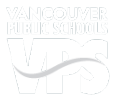Community Symposium
In the last podcast, I talked about our strategic plan. As you’ve probably heard, we’re looking ahead five years and refreshing Design II. Three critical steps in the process were very successful: a District Leadership Team workshop in August, a student symposium in September, and a community symposium in October.
I want to talk more about the community symposium in this podcast. Truly it was a great day for everyone involved—community and business leaders, students, district staff, and board members.
Our keynote speaker was Hall Davidson, a former teacher and respected expert on the intersections between technology and education. Hall talked about fully empowering our 21st-century flexible learning environments and shared his four commands for using educational technology. I think these are important to keep in mind as our digital transformation unfolds. First, allow yourself to feel wonder. Second, allow yourself to feel dumb. Third, never hesitate to use the web for support. And lastly, never hesitate to ask a kid—something we digital immigrants can all relate to.
Of course, technology is just one piece of Design II. Most district staff members are well-versed in the plan, but it’s often less familiar to community members. At the symposium, the community not only learned about Design II, but also saw how it has evolved and shaped everything we do.
More importantly, the symposium gave us a chance to listen to the community’s ideas—ideas that in the past have helped transform our district. When Design II was first created, the community had a hand in creating the vision, goals, and initiatives.
This time, the community again displayed powerful insight. Here are just a few highlights, starting with Alki teacher Chris Jones’ report on the discussion at his table:
“Our couple of strengths were first, our programs of choice, which have been mentioned before, as far as giving our students many options. We know that obviously no two students are the same. We also know that students aren’t going to maximize their potential unless they’re interested in the work that they’re doing, so having those high-interest opportunities for our students. And then, really, the Family-Community Resource Centers, it’s been a galvanizing force in so many of those communities that need positive relationships with families and schools.”
District Data Analyst Paul Stern shared his table’s assessment of our strengths in instructional quality and safe and supportive schools:
“Instructional quality, we’ve got some good common language that’s being used across the district to have more cohesive conversations and deeper understanding using that common language. There were also several comments about our district resource officers, the quick response they provide to districts and the safety and security they provide to our buildings.”
And this is Salmon Creek teacher Jeff Stark reporting for his table:
“The 21st-century tools and the commitment to technology—and that’s what brings us all here today. We feel that’s right near the top of the most pertinent strengths that our district has.”
The symposium also was dedicated to thinking about what we can improve or enhance, and what we need to do to prepare our students for college, careers, and life. Here’s Hudson’s Bay teacher Allison Kocher responding to a comment about increasing opportunities for career exploration:
“I also want to piggyback on the job thing, having students go to the community if they want to be a mechanic, not only having that professional come in, but allowing students to go see what is that really like. Because in reality, not all of our kids are going to be college-ready when they leave. They may just need to be career- or vocation-ready, so how can we provide opportunities for those students as well?”
The conversations were very productive and positive.
“My overall impression is how positive people feel about their school district, about the quality of our schools, about the quality of the education that is being delivered each and every day. And the fact that there doesn’t seem to be a lot of negatives in terms of what is it we could do better.”
That was Senator Annette Cleveland, a Fort Vancouver High School graduate and parent of a Columbia River graduate, talking about her impressions of the symposium.
Now that these activities are completed, goal area teams will convene for the next phase of Design II, Chapter 2. The teams will develop goals and target objectives in January. In March, a draft will be posted online for comment, and the plan will be finalized in April. Finally, the board is scheduled to consider and adopt the refreshed plan in May.
There’s still a lot of work ahead. For now, I’m thankful—thankful to be part of a community that values education, and thankful to be part of a district that is committed to the Design II vision.
And on that note, I wish you and your family a very happy Thanksgiving.
Take care,

